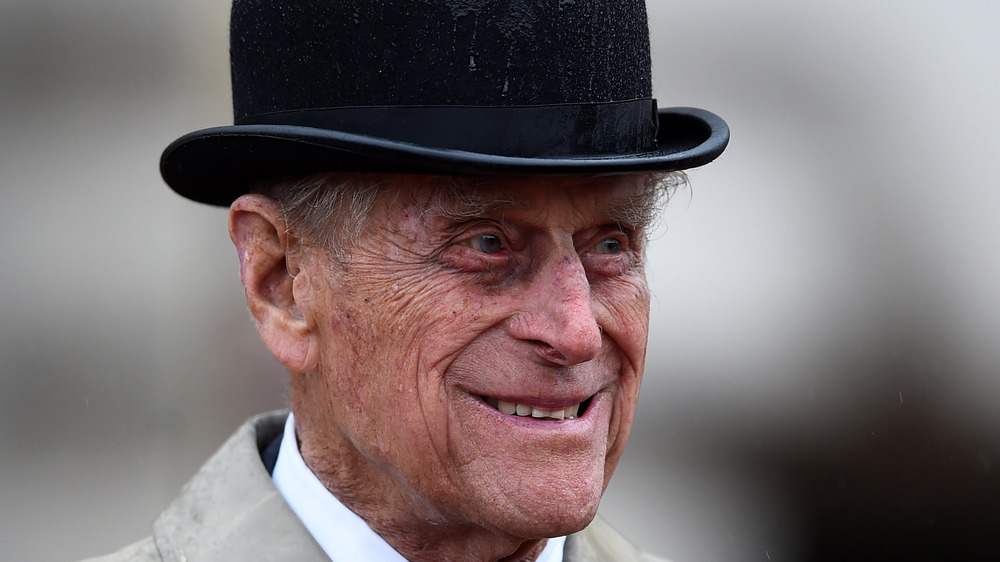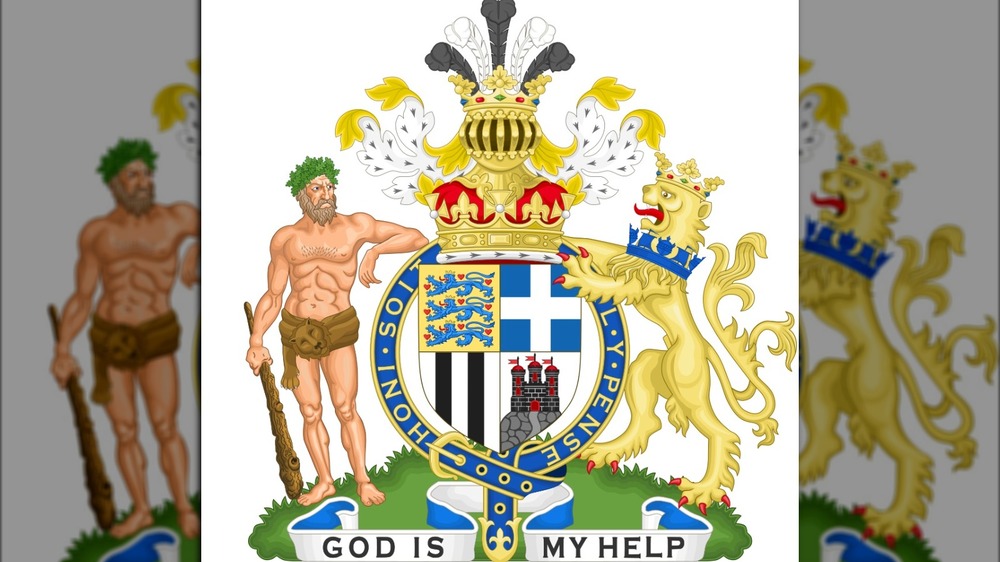Details You Missed In Prince Philip's Coat Of Arms
The lives, habits, and traditions of the British Royal Family have come under renewed sympathy with the death of 99-year-old Duke of Edinburgh and 73-year-long royal consort Prince Philip on April 9, 2021, same as they'd come under scrutiny mere weeks prior with Oprah's interview of Meghan Markle and Prince Harry. The Royal Family is the subject of relentless gossip and speculation, and Britons for decades (if not longer) have debated even the need for their figurehead's £67 billion existence, as The Guardian discusses. After all, it makes sense: The world has largely changed — for better or worse — from the days of a divine decree-and-mandate autocracy. Lots of the rules governing the Royals' daily lives seem dated for the modern era.
Yet, some traditions hold fast. Some, like Changing the Guard at Buckingham Palace, are even a bit charming. Others are the product of artistry, and subject to aesthetic interpretation. Such is the case with coats of arms.
A "coat of arms" actually refers to the fabric worn over a breastplate or shield to protect it from getting too hot, per Britannica. They showed off the ancestry of a noble or family, particularly by the 17th century, like a fingerprint, and contained various symbols denoting elements of a lineage. Technically the proper term is a "herald," which refers to the image itself. To understand the language of heralds as symbols, we can look at Prince Philip's.
A collared lion, a four-quartered shield, and Heracles
The first thing you'll probably notice when you look at Prince Philip's herald is the muscular guy with a club on the left side (the "sinister" side, with the right side being "dexter," per Britannica). But that's not the prince, nor is it a veiled insult about the prince's warlike savagery. It's probably Heracles (Hercules as the Romans called him), "crowned with a chaplet of oak leaves," as the College at Arms says. Such figures on heralds are called "charges," and this one likely honors the prince's heritage (he was Greek and Danish).
The shield in the center, another charge, also references the prince's ancestry. The first three-quarters depict "lions and hearts on a yellow background representing Denmark, a white cross on blue representing Greece, and his anglicized family name Mountbatten represented with two black 'pales' or stripes on white," as Yahoo News says. The fourth quarter contains an image of Edinburgh.
The "gorged" (collared) lion on the right has a split tail to represent the prince's dual heritage (lions are a common symbol of valor, bravery, etc.). The blue crown around its neck denotes Prince Philip's time in the navy. The Middle-French maxim Honi soit qui mal y pense translates as "Evil to him who evil thinks," and is the motto of the Order of the Garter, Britain's oldest, and highest, order of knights, founded in 1348, as The Royal Household explains. The motto "God is my help" is self-explanatory.

